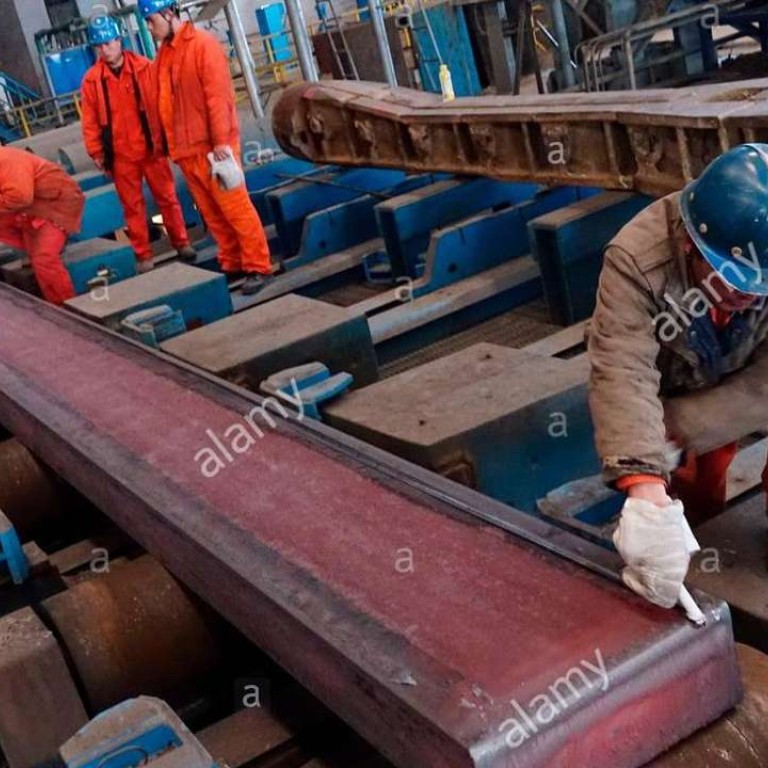
Belt and road is ‘Marshall Plan without a war’, analysts say, as Beijing and banks woo private-sector investors
All sectors can gain from the government initiative, but China’s private sector prefers to wait and see, analysts say
The One Belt, One Road initiative has been a nebulous concept for many at best, but infrastructure development is making progress, led by Beijing and supranational banks. With all this activity, will the private sector jump on the bandwagon?
“It is true that [the initiative] is heavily relying on government initiatives, but the Chinese government certainly encourages private companies to participate from both the funding and private public participation reform perspectives,” says Liao Qun, chief economist and general manager of the research department at China Citic Bank International.
“As regards to whether the private companies are enthusiastic or not, [some] would be happy to participate in view of the perceived safety of government-initiated projects, on the one hand, and the lack of good domestic projects on the other,” Liao says.
The dearth of projects on a domestic level is one factor, but opportunities outside mean that many Chinese companies are more than happy to look outside to other regions in Asia for growth, according to China commentator Robert Bianchi.

Bianchi also believes that emerging markets in the initiative’s sphere will be reciprocal to this relationship.
“Emerging markets want to move beyond dependence on raw material exports by attracting large inflows of foreign investment and know-how. Chinese firms can transplant more of their production and distribution to Silk Road partners as improved infrastructure and connectivity lower the costs of relocation,” he says. There has been increased political will for belt and road, with an upcoming summit in Beijing and backing of financial organisations such as the Asian Infrastructure Investment Bank (AIIB).
The private sector could stand to gain the areas of transport, railway, highway and utilities, telecommunications, gas, electricity and more, and this may embolden support for the initiative, according to chief China economist of UBS Wealth Management, Hu Yifan. “The demand and funding sources are becoming much more diversified with the government’s encouragement, along with pushing from international institutions,” she says.
“The private sector might be encouraged to invest with global interest rates being quite low.”

China has an interest in its neighbours getting richer and importing more stuff from China; this is a Marshall Plan without a war
“China is acting as a financial clearing house to enable the rest of the world to invest in the low-hanging fruit building proper energy, road, railway, infrastructure in Asia and the Euro-Asia continent,” says Mark Tinker, head of Framlington Equities Asia, AXA Investment Managers Asia. “Aside from these benefits, China has an interest in its neighbours getting richer and importing more stuff from China; this is a Marshall Plan without a war. This is a huge initiative and it should be in investors’ eye line as a mega trend,” Tinker adds.
In Hong Kong, the idea of belt and road is met with scepticism.
“Most people in Hong Kong do not have an idea about what One Belt, One Road is – and especially the young people who are the backbone of the umbrella movement; they simply don’t care, and business people or others in the private sector unless they are connected with infrastructure, they don’t really have much interest,” says Andrew Leung, a China strategist. “But behind the scenes, huge opportunities lie ahead, particularly with the concept of a Bay Area connecting Shenzhen, Guangzhou, Macau and Hong Kong.”

As for now, the private sector is taking more of a wait-and-see approach to proceedings.
“Part of the private sector would have reservations, a major one of which would be the conflict that the [initiative’s] projects may face as both government projects and commercial projects at the same time. The government should work out a feasible model to facilitate more private companies to participate,”
Liao says.
For now, the private sector is playing the long game, Tinker says. “The problem with newbuild infrastructure is it takes many years to put in place and its difficult for the private sector to come up with a funding model. The private sector has very big issues with political risk, and this has always been the case,” he says. “They will invest once the public sector, or the AIIB in this case, build it up,
and piggy back on the supranationals.”
